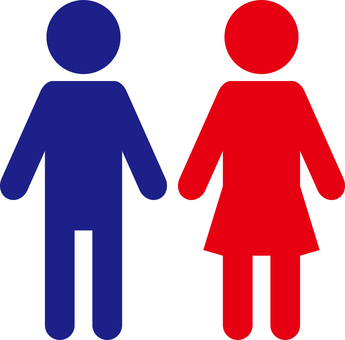Gender stereotypes
Stereotypes and prejudice about gender are called "gender stereotypes." By generalizing every people by gender, although everyone is different, prejudice and discrimination are born. The two examples of gender stereotypes are "feminity" and "masculinity."
Femininity
Masculinity
What is the meaning of "Masculinity"?
The characteristics that are traditionally thought to be typical of or suitable for men (Cambridge Dictionary)
There is an order in various kinds of masculinity. Masculinity that is superior to others is called "hegemonic masculinity."
Examples of masculinity
- active
- intelligent
- being calm
- sportsmanlike
- patience
- silent
- strong
- work hard
- violent
- ambitious
What does influence gender stereotypes?
Two main things that influence gender stereotypes are media and education.
In animation, drama, and movies, men are usually stronger than women. Teenagers think that men should treat women by watching dramas. And in a picture book, a brave boy usually becomes the main character and the mother does housework, and the father works outside of the home. Also, in a kindergarten or elementary school, boys and girls are divided by using colors, like pink and blue.
Gender stereotypes are made from an early age.
Sources:
Cambridge Dictionary. FEMNITIY|meaning in the Cambridge English Dictionary
Cambridge Dictionary. MUSCULNITY|meaning in the Cambridge English Dictionary


.png)

I liked the way that this blog was spaced out, first the short explanation on what the meaning of the word is, then the list which made it easy to understand what kind of things are classified as ‘Femineity’ and ‘Masculinity’. I also liked that there was an explanation on how we, as people, got influenced by media and education, and on top of that how this kind of influence made us think.
返信削除This blog was very easy to understand, and I liked the way they put images. Firstly, they divided into a section “femininity” and “masculinity” and then gave examples of them. I remember in one of the classes last year, we talked about the different stereotypes we have for job recruitment. So, since the female has an image of weakness, men who have an image of strong would do a job of driving a truck (carrier services) or mover. I also feel like female/girls would equal to the color pink, red, and white, and male/boys would equal to blue, black, and green. This kind of relates to Japanese schools’ bag (randoseru) color. I agree that media and education influence our views and create stereotypes. To avoid that, education becomes a very important key in raising a child.
返信削除I agree that this post is very clear and easy to read due to the generous amount of spacing, effective use of images (with wrap around text), and helpful headings. The lists are informative and "to the point" as well. Be care about spelling, though. It's Femininity--not FEMNITIY. Also, in the masculinity section you began with the question: "What is the meaning of "feminity"?"
返信削除Thank you for pointing out our mistakes! We changed it.
削除